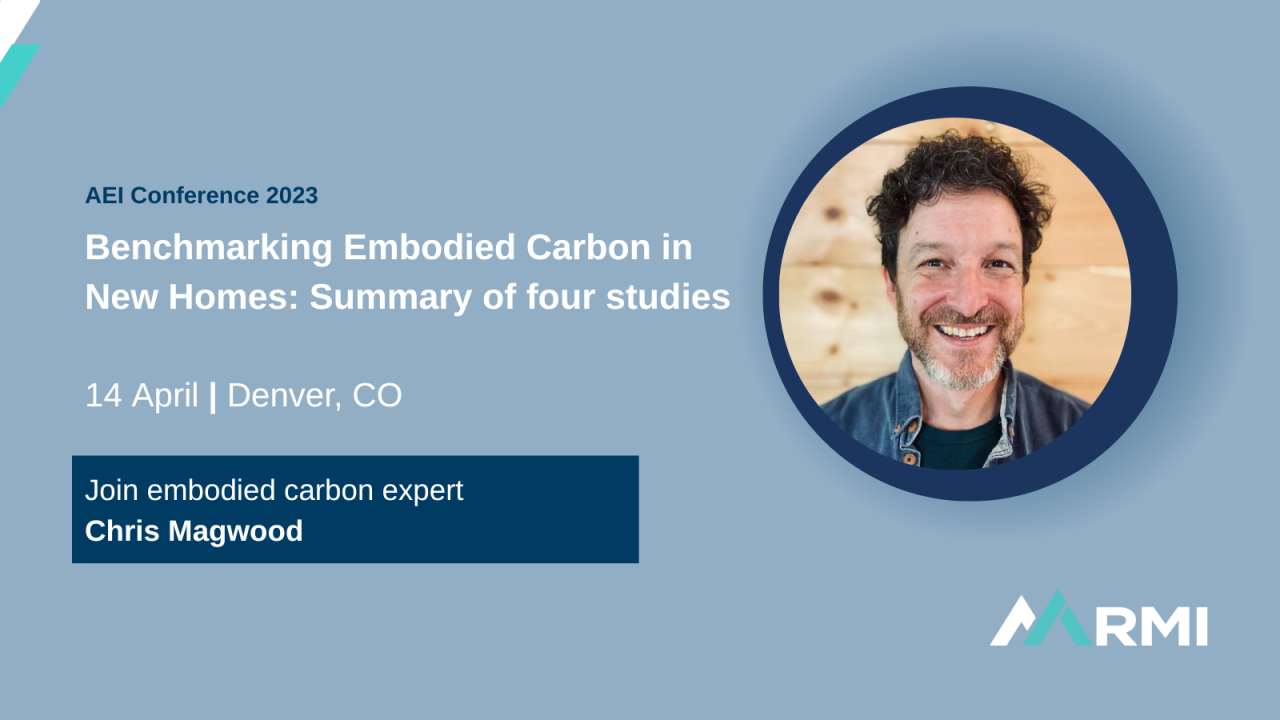
AEI Conference | Benchmarking Embodied Carbon in New Homes
![Calendar Icon]() Event hosted by RMI Carbon-Free Buildings
Event hosted by RMI Carbon-Free Buildings
April 14, 2023 – April 14, 2023Embassy Suites by Hilton Denver Downtown Convention Center, 1420 Stout Street, Denver, CO, United States 80202
Keep up with AEI Conference | Benchmarking Embodied Carbon in New Homes
See who else is going to AEI Conference | Benchmarking Embodied Carbon in New Homes, and keep up-to-date with conversations about the event.
Join the AEI Conference | Benchmarking Embodied Carbon in New Homes experienceAbout this event
Embodied carbon in new homes can represent between 8-125 years worth of operational carbon emissions, and as homes get more energy efficient and sources of energy decarbonize this significant piece of the carbon footprint of new homes will be the majority of emissions by 2030 and likely still a majority by 2050. This paper summarizes the results of four different studies of up-front embodied carbon that together have modelled over 750 new homes in Canada.
A great deal of useful information for building designers arises from these studies, including the relationship between embodied and operational emissions and how designers can leverage better understanding of embodied carbon to ensure that efforts to improve energy efficiency aren't undone by material-related emissions and how to create win-win scenarios that meet local, state and national targets.
Across these studies, a consistent average of embodied carbon has emerged, as well as examples that highlight the worst and best results possible. This paper summarizes the material categories with the greatest impact on embodied carbon and proposes design and material choices to maximize emission reductions without affecting cost, code-compliance or constructability. Several case studies of new homes with very low embodied carbon are highlighted.
The paper proposes a common methodology for assessing up-front embodied carbon and reviews some of the outstanding questions and issues in the field, including data accuracy, scope, and carbon-storage.